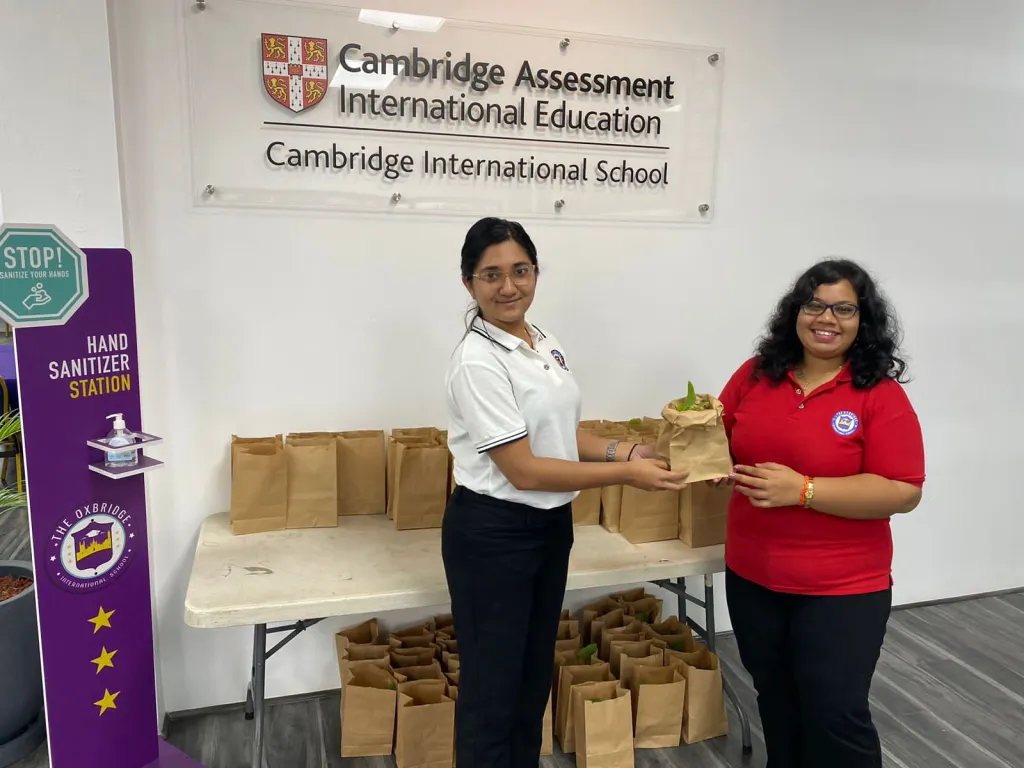
The 4H Club is intended to supply opportunities to help students develop essential life skills, practical knowledge, and wisdom through seeing, doing, and living through experiences. The 4H’s are Head, Heart, Hands and Health. The activities involving this group will be the following: treasure hunt, planting seedlings, beach-clean ups, field trips, volunteering at animal shelters and visiting children’s homes.
We partnered with a sure foundation to reduce the food import bill because the food import bill in Trinidad & Tobago is over 5 billion dollars. On October 4th, the first initiative for the 4H Club was a seedling distribution. With this initiative, we will be helping the environment by planting more trees and reducing the amount of carbon dioxide in the atmosphere. Societally, it will help family dynamics and health by engaging in exercise and being exposed to sunlight. The sure foundation aims to distribute 3 million seedlings. The amount distributed to OXIS was more than a thousand seedlings. There was Pak choi, lettuce, spices, and celery. These would have been easier for students to tend to themselves as beginners.
The following will be on how to take care of your seedling
Your seedlings should be protected from sun, wind, and heavy rain. Gradually exposing them to sun over several days. Keep in mind that the soil will dry out much faster outside, and the seedlings may need to be watered more than once a day, so check them regularly.
Proper Seedling Watering
Proper watering is another extremely important part of successful seedling care. Seedlings need consistently moist soil. They cannot survive long without water, and should never be allowed to dry out completely. However, never allow the soil to be wet all the time either. Soggy soil promotes pest infestations, mold growth in trays, and diseases that can kill your seedlings, like damping off.
How often to water – you should check on your seedling trays a few times a day to see how moist the soil is. Once the top layer of soil starts to dry out, then it is time to water. They will need to be watered more often as they grow larger.
How to water – the best way to water is by pouring it into the tray, and then allowing the soil to absorb it through the drainage holes. Bottom watering will help ensure the roots get plenty of moisture, and avoid disturbing or displacing the delicate seedlings. Be sure to dump out any that is not absorbed after 30 minutes.
How much to water – fill the tray just enough to cover the holes in the bottom of the cells so they can absorb it.
Thinning overcrowded seedlings
If there is more than one seedling growing per cell, then you will need to thin them. It is hard for some people to do this, but it is especially important.
Why do seedlings need to be thinned?
Because otherwise they will start to compete for light, water, and nutrients. It is also difficult to give seedlings proper airflow when they are overcrowded.
How big should seedlings be before thinning?
You can start once your seedlings have a few sets of their true leaves. Snip out the weakest so that only the strongest one is left growing in each cell.
How to pick the strongest seedling?
Keep the one that looks the healthiest and is the most compact, and pinch or snip out the leggy or weak looking seedlings. If they all look the same, then just choose one of them to keep per cell.
Fertilising your own seedlings
Once you start to see true leaves, it is time to begin fertilising them as part of a regular seedling care routine. But you do not want to feed them a full dose of fertiliser, because they are just babies.
How to fertilise seedlings
Start feeding them with a weak dose of liquid fertiliser at first (about 1/4 of the regular dose). Then slowly increase the strength of the dose as they grow larger.
The best fertiliser for seedlings: Using natural organic fertilisers rather than synthetic chemicals. Chemicals are notorious for burning seedlings, and they do not work as well as organic types do. One highly recommended it is an organic compost solution. You could also buy tea b
